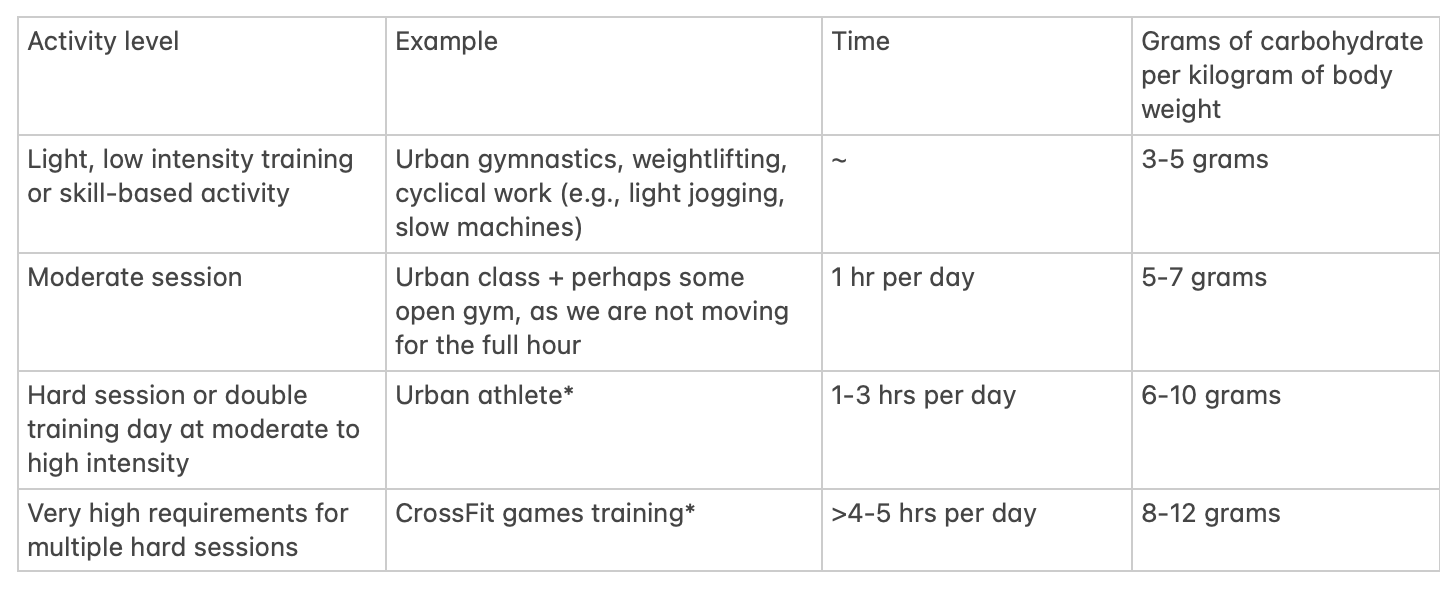|
Hello everyone. My name is Nathan Cook. I am a member at CrossFit Urban Energy Burleigh and am an Accredited Practising Dietitian and Accredited Sports Dietitian. I thought I would use the first part of this blog as an opportunity to introduce myself if you haven’t met me yet. I graduated from a Bachelor of Nutrition and Dietetics in 2018, completed my additional training in 2019 to become a Sports Dietitian and then quickly returned to University to begin my PhD where I am two-thirds through investigating how to measure and manage food waste in hospitals more sustainably (e.g. measuring waste on scales and sending food waste for composting). My recreational athlete history is a mixed bag with AFL, surf lifesaving, gym and now running and obviously CrossFit. As a dietitian outside of my PhD my goals are to educate active populations on sports specific nutrition information using scientific evidence and behaviour change techniques. This month I thought I would start with carbohydrate requirements for exercise. It is important to remember that everyone’s needs will be different from the recommendations in this blog and it is best to see a sports dietitian for a personalised approach. Please also note these recommendations do not take into consideration those with blood glucose regulation issues such as insulinaemia and diabetes. The availability of carbohydrates to be used by the muscles and central nervous system during exercise is important for when optimal performance is desired. Some sessions you will do in training will have low and or high carbohydrate needs, and therefore require low and or high carbohydrate availability. Basically, you want high amounts of carbohydrate availability for high intensity sessions such as a Tuesday night strength and metcon piece in a 1-hour class, and low availability for a Monday night gymnastics or Thursday night weightlifting session. This is otherwise known as the concept, ‘fuel for the work required’, whereby we appropriately fuel for the sessions requirements. To put this into context you would feel a lot different at the end of typical Urban class versus the gymnastics session where there is not a lot of heavy breathing, plenty of breaks, and less intensity, therefore less carbohydrate would need to be available to the working muscles and therefore consumed in the day/s prior, compared to a combination of heavy squats, machine calories, burpees, running, and wall balls. To display the recommendations for carbohydrate intake I have made a few tables. You can view a prettier version of the below tables on my instagram @developmentdietetics Table 1. Daily needs for fuelling and recovery *If you have < 8hrs between 2 sessions/events e.g. am/pm consume 1-1.2g in the first 4hrs post session 1 and then continue intake as normal diet Table 2. Competition fuelling Table 3. Carbohydrates during exercise (usually not required in CrossFit unless at the games level (e.g., Murph, marathon row) Now what do these carbohydrate amounts look like when we consider food? I have chosen some common carbohydrate containing foods in Australia to represent these amounts for a 70kg male and 60kg female to fuel before an intense Urban CrossFit class. So, to fuel for the training session on the day at 4:00pm within 1-4 hours of the class it will be important to consume some carbohydrate at lunch time (wholegrain bread, rice, potato) and if desired or required an easy snack before the session (rice crackers + spread, fruit, a crumpet and honey). I am going to present only the lower end of the recommendations. To get 1 gram of carbohydrate for the 70kg male (70 grams of carbohydrates) this would look like 3 slices of Burgen soy-lin seed bread as a sandwich or eggs on toast, 200 grams Sunrice brown rice with vegetables and a lean protein of choice, 120 grams of Uncle Toby's quick 2 minutes oats in a smoothie. For the 60kg female this could look like 80 grams of barilla spaghetti in a pasta dish, 2 super soft mission wholegrain wraps with some filling of choice (perhaps tuna and salad), 80 grams of vermicelli noodles in a vegetable and tofu stir fry. So, you can see from these examples to reach our carbohydrate requirements for exercise we need to consider eating a more food than the standard unactive population. Now remember these are just guidelines, not mandatory and I have only provided an example of a 1 gram of carbohydrate per kilo gram of bodyweight example and not considered the larger end of the spectrum or represented other heavier or lighter bodyweight categories. It would be my recommendation to try a fuelling strategy for yourself and see if it changes your workout performance or perceived effort in the workout, and then adjust up or down in grams of carbohydrates per kilogram of body weight to find what best suits you for performance and gut comfort. If you train in the mornings, you have the option to train fasted considering an adequate meal containing carbohydrates was eaten the night before, or I would suggest a small bowl of low fibre cereal, or 1-2 pieces of toast with jam, or a banana mixed in with yoghurt. Strategies which manipulate the timing, amount, pattern, type, and quality of carbohydrate can also be used but will not be discussed in today's blog. If you have any further questions regarding the information above you can listen to the full episode of my podcast @thecookscommunity where I go a bit more in depth and explain the science behind these recommendations and some more examples of these guidelines in practice – 3. Penne and Red Sauce | Nutrition explained | Carbohydrates for training and competition https://thecookscommunity.podbean.com/ If you have any other nutrition related questions, please approach me in the box, DM me on instagram or email me on [email protected] - - - - AuthorNathan Cook
0 Comments
Your comment will be posted after it is approved.
Leave a Reply. |




 RSS Feed
RSS Feed